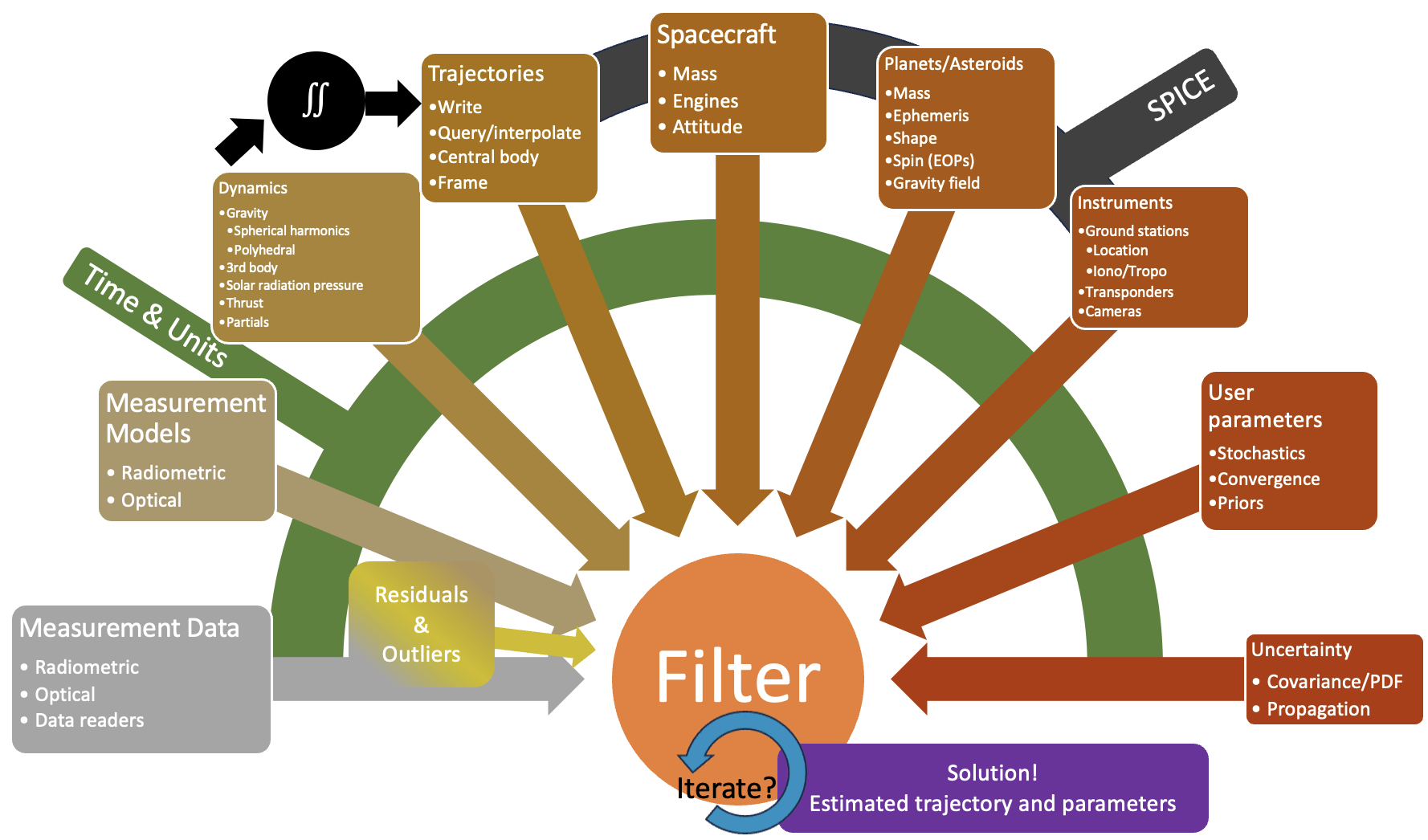The Orbit Determination Process#
Last revised by M. Pugliatti on 2025 FEB 4
The Deep Whale Network (DWN) pre-process the actual radiometric quantities that are observed by a network of ground-stations (e.g. Deep Space Network or DSN, ESTRACK, etc.) and OpNav data. In doing so, the DWN also generate auxiliary data needed by computed models (e.g. for tropo/iono corrections, frequency data, turn-around ratios, etc.) These former quantities are referred to as the “observed” ones , while the latter as “auxiliary” data. These “auxiliary” data is feeded to SCB measurement models, which implement the computed formulations from [Moyer2000] for the available measurement types.
The estimation programs of SCB set fit the computed values of the observables to the observed values of the observables in a least squares (or lKF, SRIF, batch SRIF) sense by differentially correcting the values of the solve-for parameters. This process uses the observed -minus- computed residuals (R = O-C) and the partial derivatives of the computed values of the observables with respect to the solve-for parameter vector q calculated in SCB. The resulting estimated values of the solve-for parameters determine the trajectory of the spacecraft.
For this process to work correctly, a variety of tasks need to be performed to provide the filters with the necessary data in an accurate and efficient manner. This is represented by the schematic below.
More details about the OD process can be found in the following sources:
[Moyer2000] T.D. Moyer, Formulation for Observed and Computed Values of Deep Space Network Data Types for Navigation, JPL/NASA, 2000.
[Thornton2000] C.L. Thornton and J.S. Border, Radiometric Tracking Techniques for Deep-Space Navigation, Wiley, 2000.
[Montenbruck2000] O. Montenbruck and E. Gill, Satellite Orbits: Models, Methods, and Applications, Springer, 2000.
[Tapley2004] B.D. Tapley, B.E. Schutz, and G.H. Born, Statistical Orbit Determination, Elsevier, 2004.

